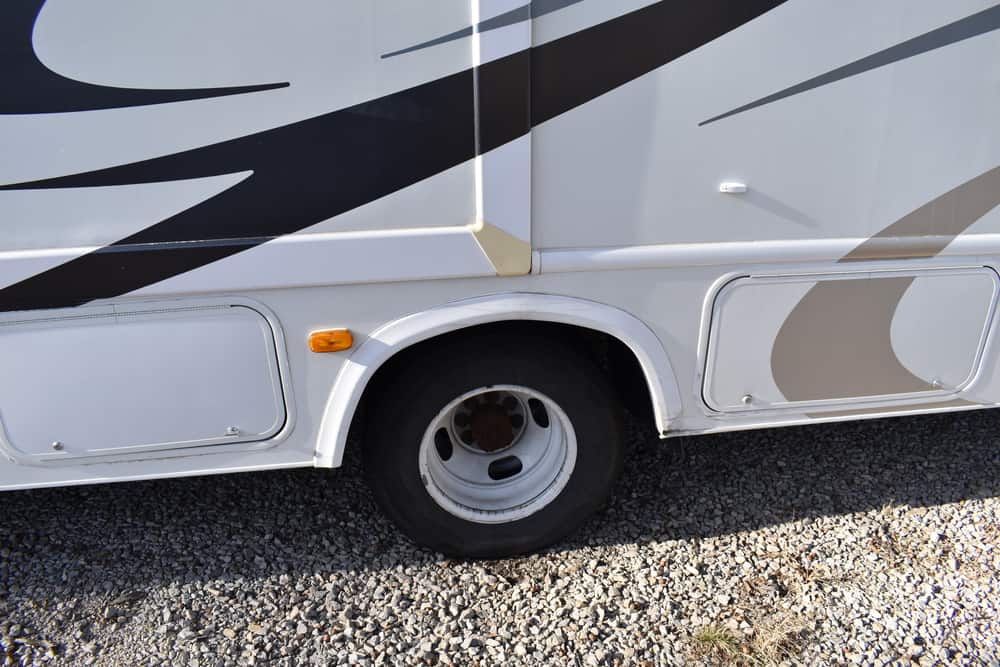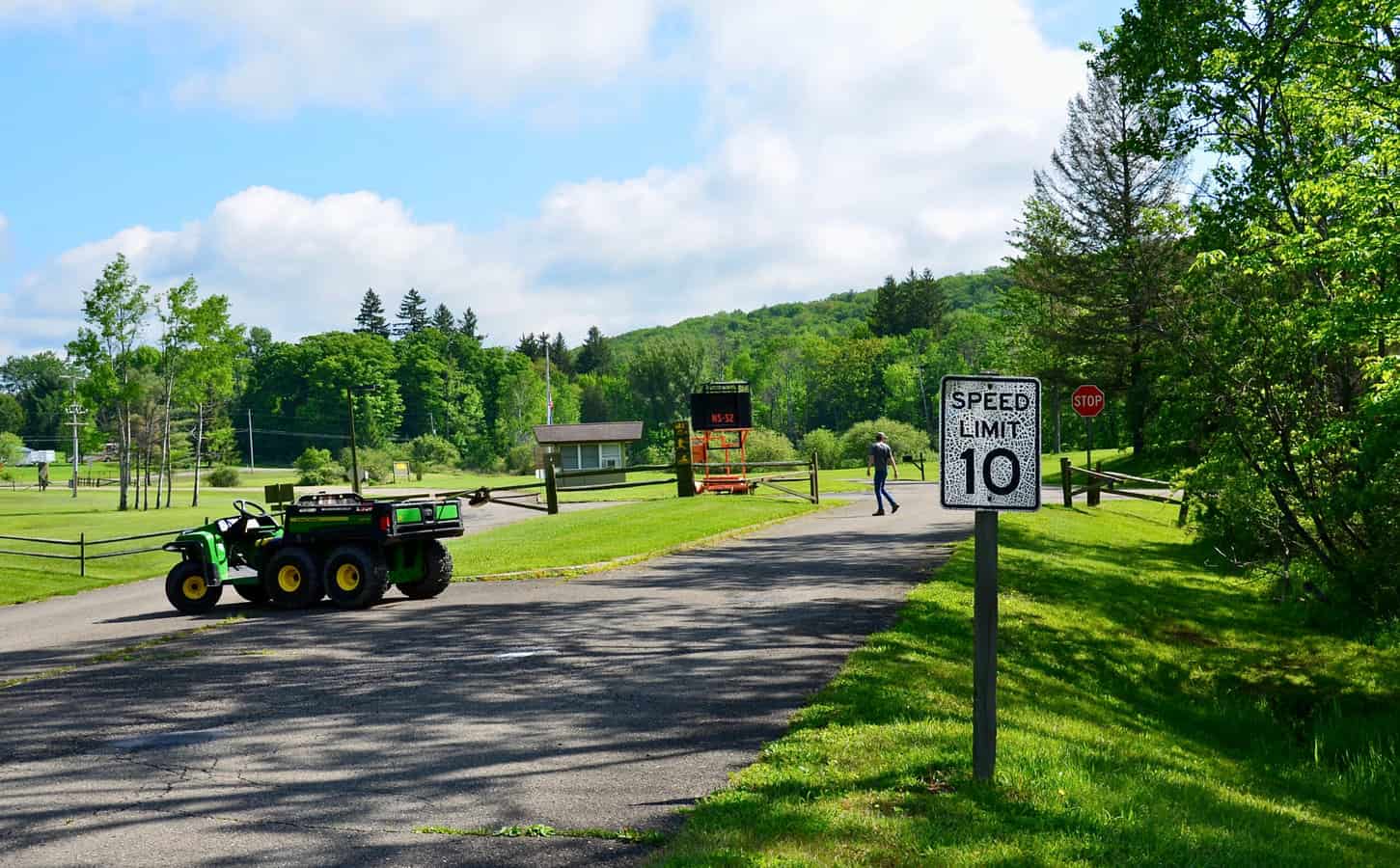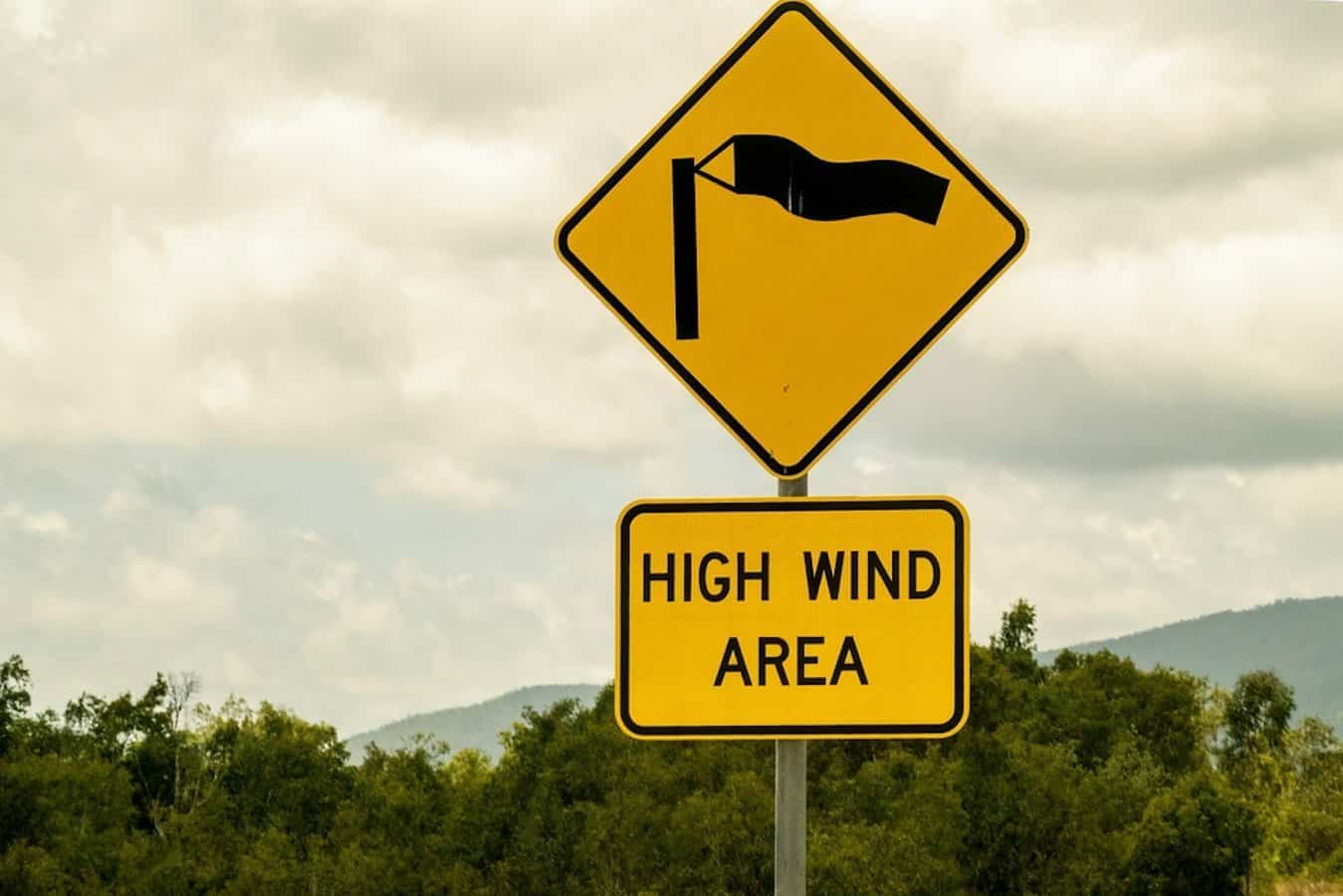
Is It Safe To Be Driving On Low Tire Pressure?
Maintaining good tires is one of the most important parts of RV ownership. After all, without good tires, you won’t be traveling anywhere! Despite this, many people end up driving on low tire pressure, which puts unnecessary strain on the tires and the entire vehicle.
It’s a bad idea to drive with tires that are overinflated or underinflated because this shortens the lifespan of your RV. Although it’s easy to replace tires once they blow, it’s best to avoid this situation altogether. Blowouts can be dangerous, especially if you’re driving on the highway when they occur.
Driving on low tire pressure causes a lot of problems for your RV, some more obvious than others. Below we’ll discuss a few of the risks you run when you drive with flat or underfilled tires. We’ll also cover some tips for proper maintenance so you can enjoy disaster-free road trips.
Poor gas mileage
One of the worst downsides of low tire pressure is the effect it has on your fuel efficiency. RVs are already gas guzzlers, so you don’t want to throw any extra money into that pit. If you drive with underfilled tires, your engine has to work harder to complete each rotation. This effort uses up your gas, and that means you need to stop for refills more frequently.
Nobody wants to pay for extra gas, especially with the rising price of fuel. Keeping your tires inflated to the recommended level will help you save money and keep your RV in better condition.
Increased vehicle strain
Every part of an RV has to work in order to get it moving. Whether you’re driving a motorhome or pulling a trailer, there’s an engine that’s working hard. It doesn’t need to deal with the added stress that comes from driving on low tire pressure.
RVs are also significant investments, so it’s important to keep them in good shape for as long as possible. Filling your tires and performing regular maintenance ensures that everything is in good working order. Underfilled tires require your engine and the other automotive parts to work extra hard. In turn, this shortens the lifespan of your RV.
Uneven tread weathering
Driving on low tire pressure also puts unnecessary stress on the tires themselves. When your tires are flat or underfilled, they tend to slump and spread out. This means that more of the tire comes into contact with the road as you drive.
Typically, only the center of a tire will face the wear and tear of the road. But if you drive on underinflated tires, the sides will also be exposed to this rough treatment. This weathers your tread in an uneven way. Even if you reinflate your tires later, some damage has already been done.
Reduced traction
This is related to the point above. When you place extra stress on your tires and wear them down, you’ll inevitably lose some traction. All tires eventually wear out, but you’ll speed up the process if you’re always driving on low tire pressure.
Traction is very important for RVers, whether it’s the tires of your RV or the tow vehicle. You need to have as much grip as possible to get your rig moving and control its direction. Driving on snow, ice, mud, and gravel also becomes much harder if your tires have lost their traction.
Less responsive vehicle
Driving with compromised tires is extremely dangerous, especially when you’re driving something as large and bulky as an RV. Tipping and swaying are already huge risks, so you’ll want to do everything you can to make the experience safer.
Low-pressure tires make your vehicle less responsive to small adjustments. This is connected to the reduced traction and uneven wear and tear of the tread.
If your vehicle can’t respond quickly enough to turn, change lanes, or make other adjustments, you’re in trouble. You also might deal with some wobbling and drifting if your tires are out of shape.
Increased risk of blowouts
One of the biggest risks of driving on low tire pressure is the increased likelihood of blowouts and flat tires. Blowouts are dangerous for you and everyone around you on the road.
It’s never fun to deal with a flat tire, but it’s especially hard when you’re working with an RV. Because of their increased size and weight, it’s harder to jack them up and replace tires. In addition, you can’t always guarantee that there will be a mechanic nearby, so you have to rely on roadside assistance programs.
Once you experience a blowout, the structure of your whole RV will be compromised. You’ll be unbalanced until you can pull off and seek help. This can lead to crashes, which are potentially deadly at highway speeds.
It’s imperative that you avoid tire blowouts at all costs. Maintaining the proper tire pressure is a great way to start.
Tips for RV tire maintenance
If you want to keep your RV in the best possible condition, you need to practice proper RV tire maintenance. This means more than just replacing tires once they go flat. You need to include tires in your regular check-ups, so you don’t miss any budding problems.
There are also preventative measures you can take to keep your tires good for as long as possible. You should always check your tires before leaving on a long trip. Also, check them before and after you put your vehicle into storage for the winter. Below we have a few tips that will help you keep your tires properly filled and in great shape!
Use a tire pressure monitoring system
Tires can unexpectedly become damaged, even if you look after them. This is why a tire pressure monitoring system is a great gadget to bring along. One of the most popular models is the Tymate Tire Pressure Monitoring System. This unit is solar-powered and can alert you to various problems that your tires might experience.
It can alert you to if your tire pressure is too low or too high, if it has a puncture, or if the temperature is too high. These early warnings will help you address problems before they become dangerous. You can use a tire pressure monitor to check your tires during maintenance, but it will also alert you if there’s a problem while you’re driving.
Rotate tires
As with any vehicle, you should regularly take it in to get the tires rotated. This will help ensure that your tires experience an even wear pattern and nothing gives out before its time. During these checkups, you can also get your vehicle properly aligned so you won’t drift of wobble on the road.
Cover tires during storage
If you choose to store your RV during certain seasons, make sure you cover it up. A good RV cover can protect your vehicle from a variety of different dangers, but don’t forget about the tires during this process! Quality tire covers will insulate your tires from extreme temperature changes, prevent UV damage, and keep them cleaner.
Adapt to seasonal changes
Finally, prepare your RV tires for changes in the weather. If you plan to use your vehicle during the winter, you’ll need proper tires for that. Chains will give you extra grip on snowy/icy roads. Don’t forget to switch tires as the cold weather approaches! You can keep four-season tires on all year, but switching back and forth doesn’t hurt either.
Track your RV maintenance
Make sure you keep track of all your RV maintenance and repairs with an online tool such as RV LIFE Maintenance. Not only can you keep all of your documents in one place, but you’ll also receive timely reminders when maintenance is due to help you avoid costly repairs and potentially serious accidents.
Related articles:





I’ve noticed that if you fill the tires at the cold pressure stated on the tire that they will go way over pressure. Example, my tires state 125 but after driving for a while it goes up to 135. Should I go under stated pressure? I have been given different answers by different people. What would you suggest? I have TMS on all my tires, RV and toad.
One consideration I have found is the ambient temperature. We were just in very cold weather and our tires were at 99psi (regularly 110). Our TPMS was warning us of low pressure. I knew that after getting on the road, the ambient temperature would rise and so would the temperature of the tire. In a short time, we were at optimum pressure and temperature.
Good article….I do have a question, should you inflate the tire to what is marked on the tire or follow what the RV materials suggest for that unit you are towing? We have been told by different RV techs different answers.
Thank you
Mary P
The vehicle manufacturer specs are the ones to follow. My tires can go on different weights of vehicles. The same tire can go on a class C or a class B. Both vehicles have different weights and require different pressures. Always follow the vehicle specs.
Following